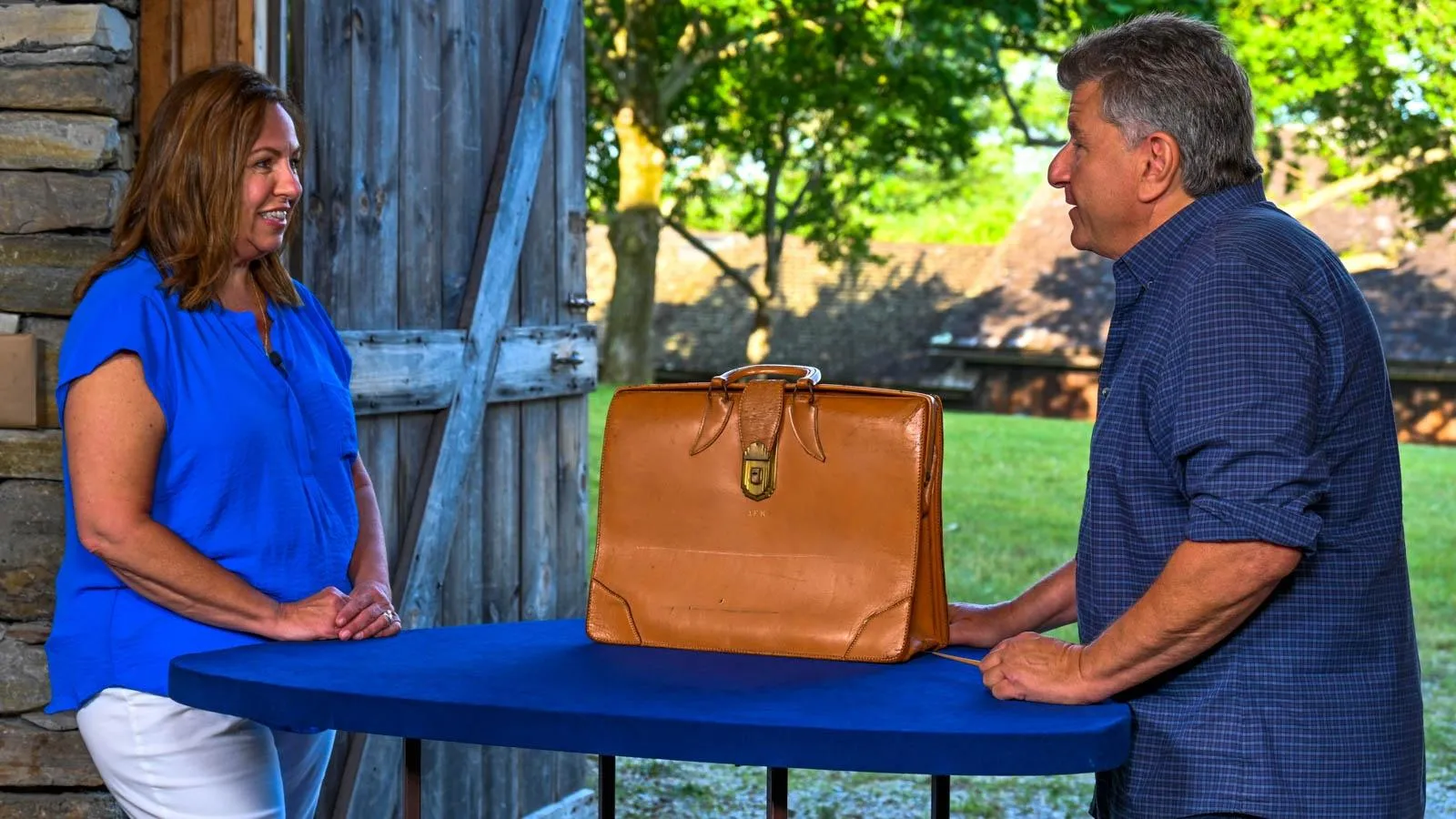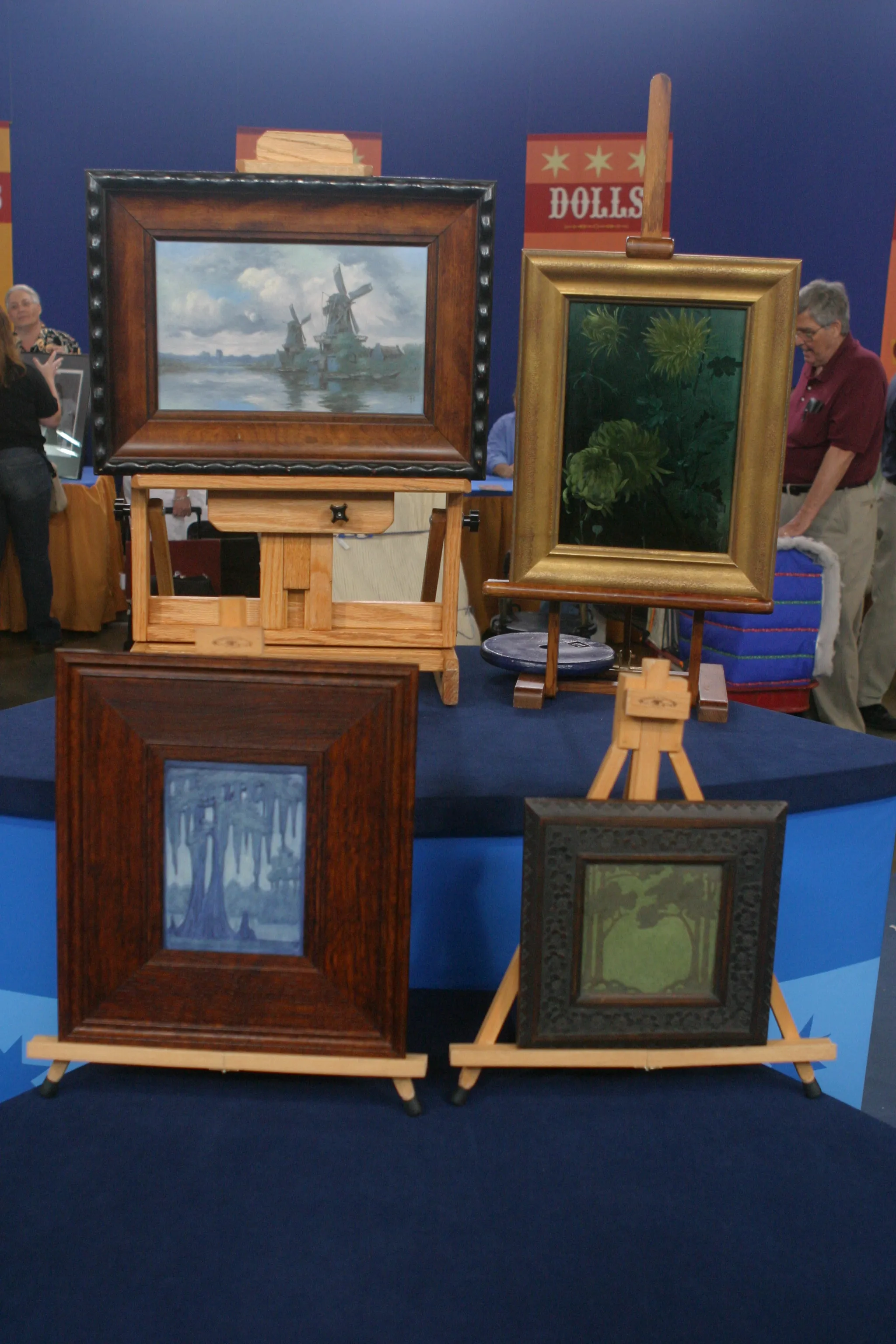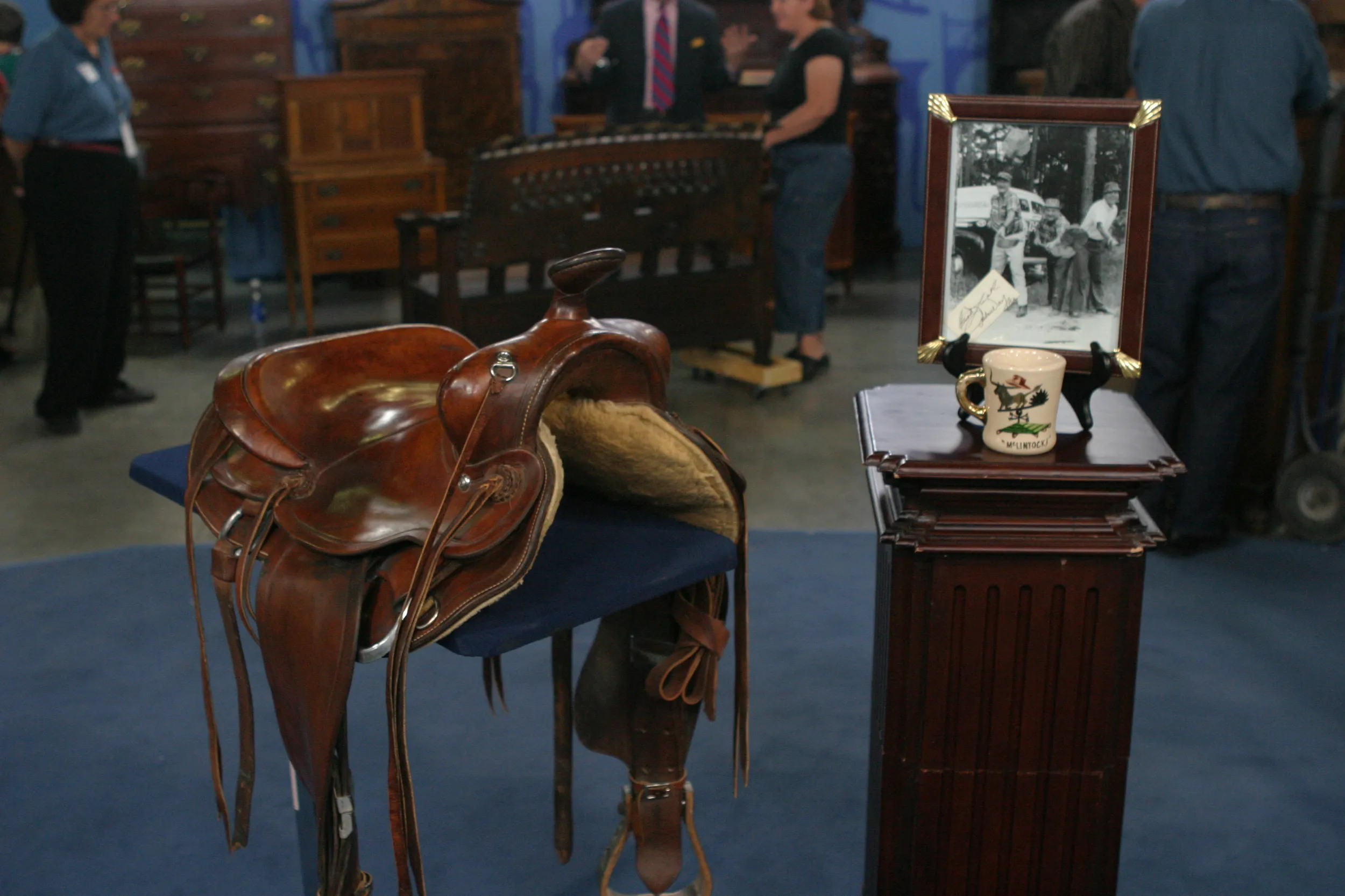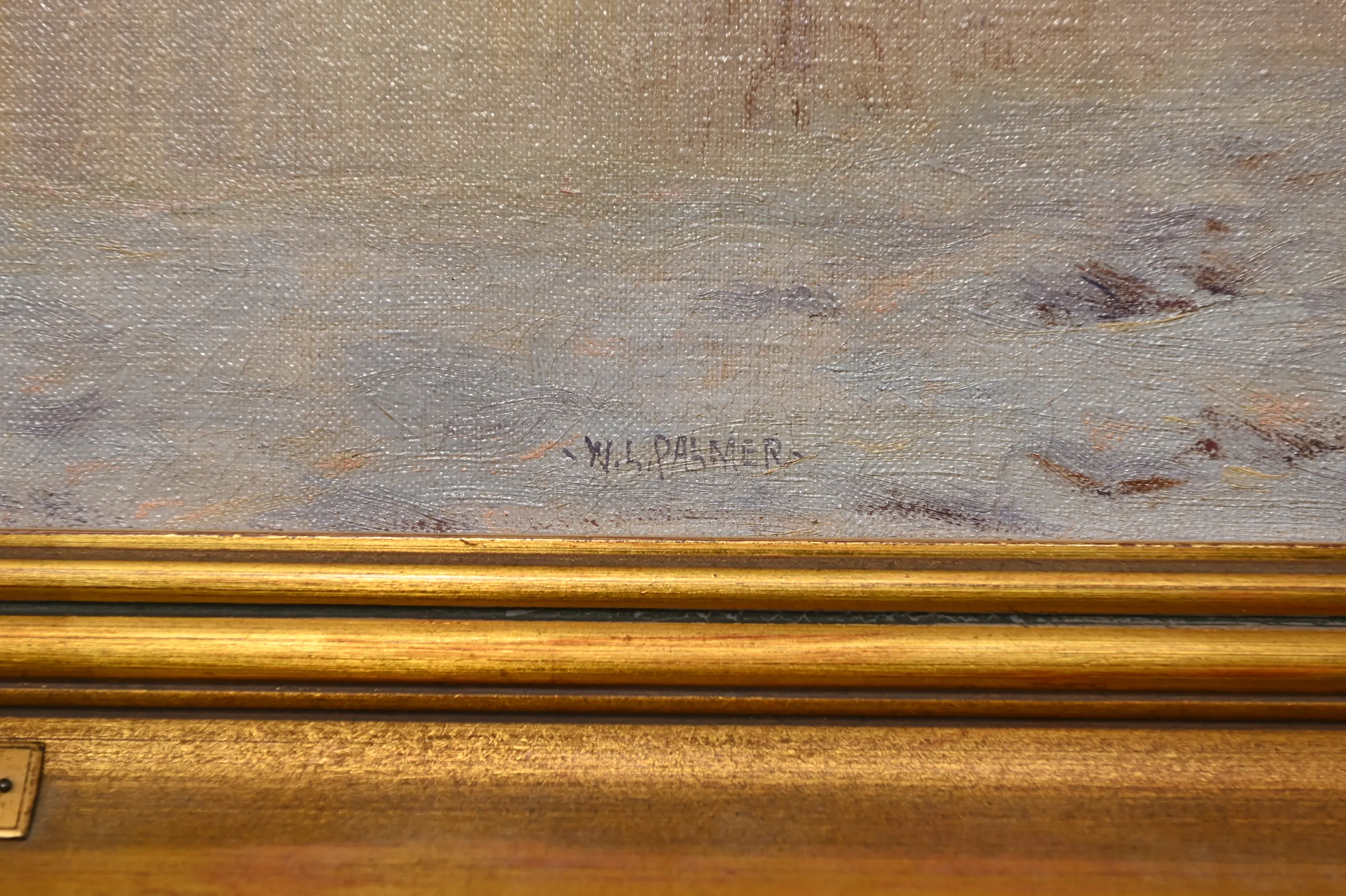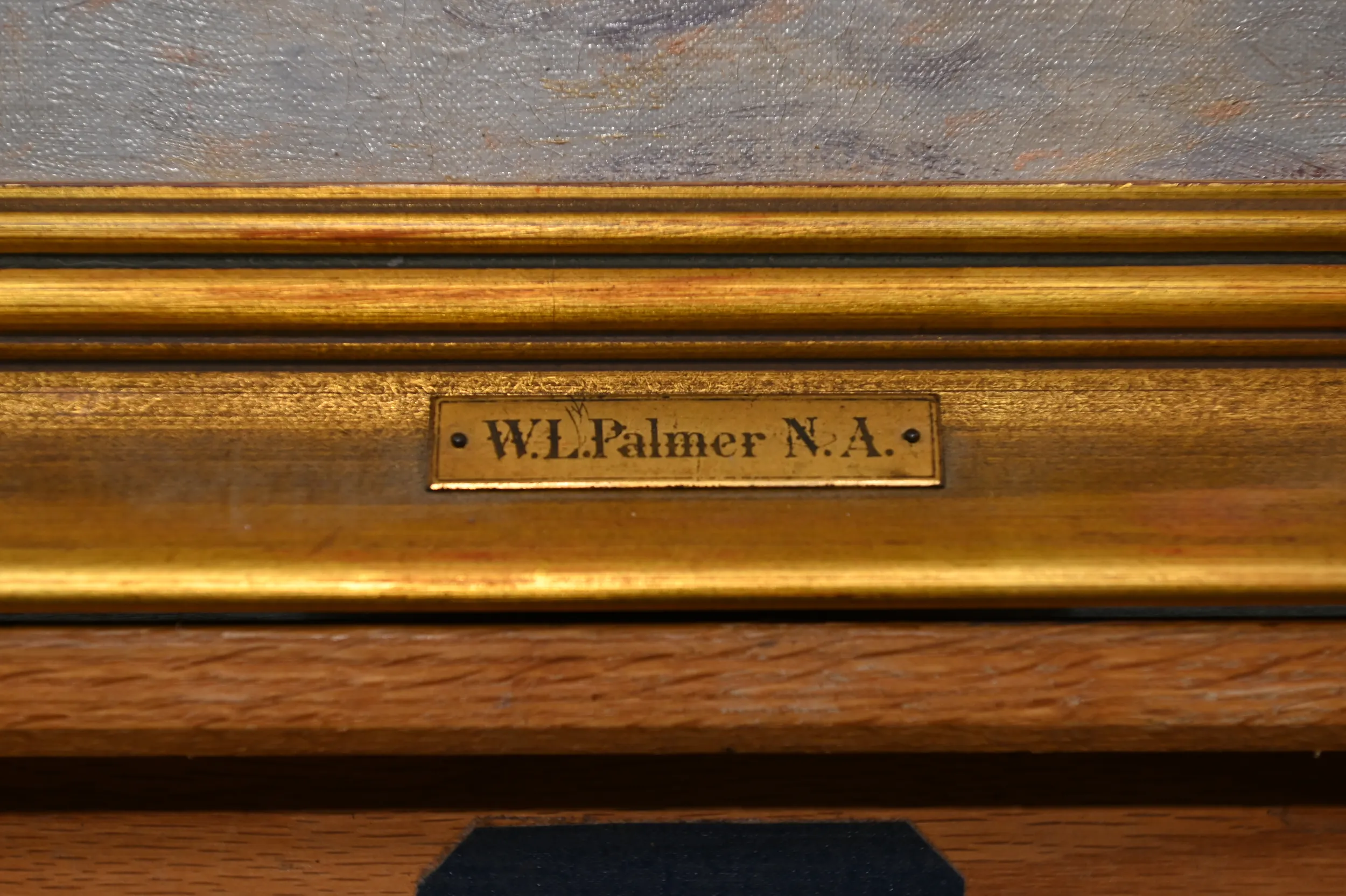GUEST: I remember it in the family house above the fireplace since I was a wee little lad. And I'm pretty sure-- I don't know, but I'm pretty sure-- it came down from my, from my grandfather. And I don't know where he found it.
APPRAISER: Where were they living, your grandparents?
GUEST: They were living down in the Virginia area. My parents were in, uh, Albany area.
APPRAISER: So Walter Launt Palmer was born in 1854 and died in 1932. And really spent most of his life and career in Albany, New York. But his dad was a pretty accomplished sculptor, Erastus Palmer.
GUEST: Hm! Oh.
APPRAISER: So, growing up, he was surrounded by fellow artists, one of whom was Frederic Edwin Church, who was one of his first teachers.
GUEST: Hm.
APPRAISER: So imagine that. I mean, he had sort of a head start. And he did a lot of his formal training in Albany, but he also had a stint in Paris, and had a stint at a famous studio in New York City, the Tenth Street Studio.
GUEST: Mm-hmm.
APPRAISER: It was sort of a gathering place for innovative, avant-garde painters.
GUEST: Oh.
APPRAISER: When he was in Paris-- that's where Sargent, also, was studying, under their same mentor-- he became infatuated, like so many American artists, with the Impressionist painters.
GUEST: Mm.
APPRAISER: And Palmer went on to have a really lengthy, distinguished career, uh, working in that vein and exhibiting in the States. This oil on canvas was probably executed in the early 1900s, 19-teens, maybe.
GUEST: Oh.
APPRAISER: As late as that. Right during his most mature period and during the most successful part of his career. It's a nice size for the artist. He became so well-known for this subject, this atmospheric, luminous winter subject, that he was regarded as sort of the American painter of winter.
GUEST: Wow. Would he do it on site? I mean, would he be out in the winter, in the snow, painting this?
APPRAISER: He painted it in his studio, primarily, though he did make many field sketches in preparation for his work.
GUEST: Ah. Ah, I see.
APPRAISER: So I've got a few bones to pick with the, with the painting. Pick away. So the frame was replaced at some point, so it's a newer frame, and the plaque was probably switched over to this frame. At one point in its lifetime, this oil was cleaned.
GUEST: Ah.
APPRAISER: And whoever stripped the varnish, cleaned the painting, and then subsequently re-varnished the painting, they were really aggressive. It was over-cleaned.
GUEST: Oh.
APPRAISER: As it is, a reasonable auction estimate for this painting would be $20,000 to $30,000.
GUEST: Wow, that's great.
APPRAISER: Had it not been so aggressively cleaned, I think that a reasonable expectation would have been closer to $40,000 to $60,000.
GUEST: Wow-- no, that's, that's wonderful. It's part of the family.

